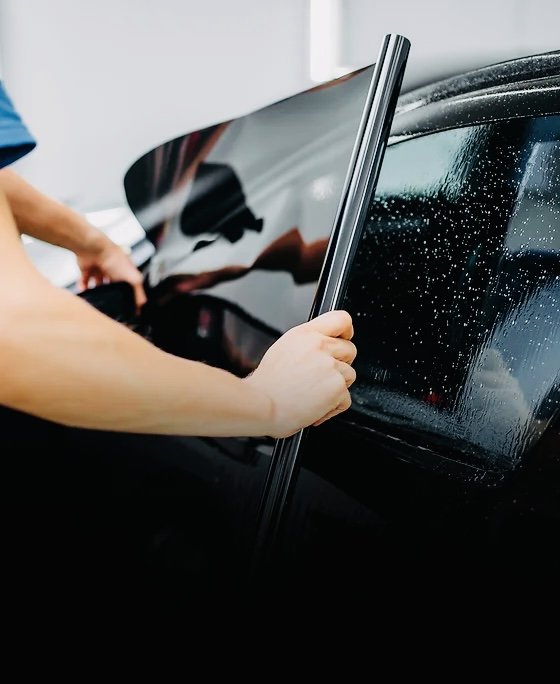Explore the Best Options for Window Tinting Folsom Provides
Your Comprehensive Guide to DIY Window Tinting: Advice
Undertaking a DIY window tinting job offers a chance to enhance both the performance and aesthetic appeals of your space. Prior to beginning on this endeavor, it is critical to navigate the complexities of regional tinting laws and choose an appropriate movie that aligns with your purposes.
Comprehending Window Tinting Laws
Navigating the complex landscape of window tinting laws is vital for any kind of DIY enthusiast seeking to improve their vehicle's aesthetic appeals and comfort. Each state in the U.S. has certain policies relating to the allowable levels of tint on numerous windows, which can substantially affect your decision-making procedure.
Normally, these laws determine the maximum allowed Visible Light Transmission (VLT) percentage, which describes the amount of light that can travel through the tinted home windows. Some states allow only a particular percentage of tint on the front windshield, while enabling darker shades on back home windows. Compliance with these policies is crucial, as failing to stick can result in fines or the requirement to get rid of the color completely.
Additionally, there are typically differences in between guest cars and commercial cars, with various policies using to each group. It's suggested to consult your local Department of Motor Automobiles or equal authority to gather precise information tailored to your area. Understanding these laws not just ensures legal conformity yet additionally boosts safety and security by preserving visibility and stopping prospective risks while driving.

Choosing the Right Tint Film
Selecting the appropriate color movie is a vital action in the do it yourself home window tinting process, as it directly influences both the appearance and capability of your vehicle's home windows. Numerous variables ought to lead your option, including the kind of movie, its legal conformity, and your desired results.
First, think about the different kinds of tint movies offered: colored, metalized, ceramic, and crossbreed. Dyed films supply a standard level of privacy and heat reduction however might fade over time. Metalized movies provide improved warmth denial and sturdiness however can disrupt electronic signals. Ceramic films, while a lot more pricey, supply exceptional warm resistance and UV defense without signal disruption.
Following, guarantee that the film complies with regional laws concerning visible light transmission (VLT) percents. Conformity with these legislations is vital to avoid fines and make sure security.
Crucial Devices for Do It Yourself Tinting
Having selected the ideal color movie for your home windows, the next step includes collecting the essential devices to ensure a successful setup. The primary devices you will need consist of an energy blade or a razor blade, which is important for cutting the color film to the preferred dimension. A squeegee is additionally vital, as it aids eliminate air bubbles and ravel the film during application.
In addition to these key tools, a spray container loaded with soapy water will certainly assist in producing a workable surface for the tint movie, enabling changes prior to it adheres permanently. A measuring tape makes certain accurate measurements for reducing the movie accurately, while a soft towel or lint-free towel is crucial for cleansing the glass surface before application.
Furthermore, think about utilizing a heat gun or hairdryer, as this can aid mold and mildew the tint film to the shapes of the home window and facilitate adherence. Finally, gloves are suggested to prevent fingerprints on the film throughout installment. By gathering these vital devices, you will certainly be well-prepared to tackle your DIY home window tinting task successfully.
Step-by-Step Application Process
Begin by extensively cleansing the window surface to make sure optimum adhesion of the color film. As soon as the home window is tidy, gauge the read here color movie against the window, allowing for a minor overlap on all sides.
Gently spray the window surface area and the glue side of the film. Meticulously align the film with the top of the home window, ensuring it is right. Window Tinting Folsom. Use a squeegee to smooth the film, applying firm, even pressure.
Allow the tint to cure for at the very least 24 hours without rolling down the home windows. Comply with these steps diligently for ideal outcomes in your Do it yourself home window tinting task.
Maintenance and Treatment Tips
Correct maintenance and treatment of your window tint is necessary to ensure its longevity and performance. To begin with, prevent making use of abrasive cleansers or harsh materials when cleaning up tinted windows. Your Domain Name Rather, select a mild, ammonia-free cleaner and a soft microfiber fabric to stop scratches and peeling off.
It's suggested to wait a minimum of a week after setup before cleansing your home windows to allow the sticky to fully heal. During this preliminary duration, avoid rolling down the home windows to prevent any damage to the tint.
Normal upkeep involves checking the sides of the tint for any kind of indications of bubbling or raising (Window Tinting Folsom). If you observe any type of problems, it's ideal to address them immediately to avoid additional degeneration. In addition, beware with making use of window treatments, such as tones or drapes, as they can create heat that could jeopardize the tint with time

Conclusion
To conclude, undertaking a DIY window tinting job demands careful consideration of neighborhood regulations, choice of ideal tint films, and the utilization of essential devices. A systematic application process learn this here now ensures optimal results, while routine maintenance adds to the durability of the tint. By sticking to these guidelines, people can attain both visual enhancement and raised privacy in their rooms, making DIY home window tinting a valuable endeavor.